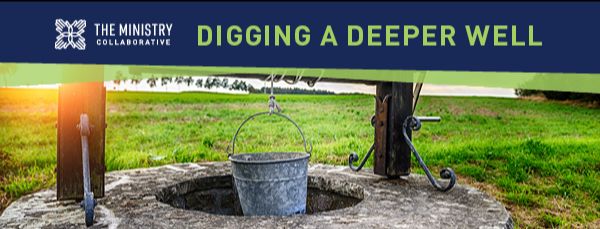At first glance, the title of the Harvard Business Review article “Managers Can’t Do It All” elicited the response, “Well, Who on Earth Can?”
The article summarizes so many shared feelings of this moment: everything out of control, one-time work satisfactions seeping away, the erosion of criticism, people’s needs constantly changing with change being the only constant, and a growing feeling of being always at least one step behind. Finally, the article asks: What happened to those stable, well-defined jobs that managers were so good at for so long?
To which church board members everywhere may well say, Amen! What did happen to those stable, well-defined church board jobs, lined up in little boxes on organization charts, with neat labels like Finance, Buildings and Grounds, Christian Education, Fellowship, Caring? What happened to the regular church calendar with its expected seasonal activities? What happened to “Big Change” meaning the year we moved the time of the Christmas Eve service from 7:00 to 7:30 pm, or the start of confirmation class from February to October? We know all that is out the window in March 2022.
The HBR article suggests three fundamental shifts in the role of managers today. While there are differences between the managers HBR has in mind and members of church boards, perhaps those differences are not as great as we think.
The three shifts are:
A power shift from “me” to “we”
A skills shift from task overseer to performance coach
A structural shift from static and physical to fluid and digital
What do these three shifts have to do with your church board work?
In an office setting, the power shift from “me” to “we” means shifting the focus from personal achievement to the goals of the organization and always starting there. In a congregational setting, it means pretty much the same thing. “Me-ism” is alive and well in congregational leadership, too. It is rare that a church board will begin any endeavor with the thought that community – the “we” – is essential for every single thing the congregation does. But we cannot grow without community. We cannot serve without people coming together to do together that which would be impossible as individuals. How does just this one shift – from me to we – change how your church board imagines its work?
The skills shift from task overseer to performance coach can best be summed up by thinking about the legendary “Time and Talent Survey.” When new members receive that survey, it says, “Welcome and thank you for fitting into the needs we have to keep our church machine running.” The shift today would be to say instead: “Our church board and staff are here to help you grow spiritually. How do you want to express your growing faith and how can we support you in that?”
The structural shift from static and physical to fluid and digital … well, let’s just say that “static and physical” describes everything about church, from the buildings, to the 5-year strategic plan (that took two years to write and was adopted in January 2020), to committee structures that assume 90 percent of people will “come to church” in the same patterns they have for decades, to budgeting and planning for next year based on results from last year. By contrast, “fluid and digital” means church boards constantly having to ask, Why? Why are we doing this? Why are we still doing this? And, why are we a church – what is essential?
It is reasonable to read about these shifts and sigh. More change! We’re tired of everything changing! And yet these shifts can also be seen as a gift. Just how they are a gift – what they make possible – is a topic worth exploration by your board.
How do the three shifts described above show up in other parts of your life? How about in your church board work?
Which of the three shifts has been easiest for your church board to embrace? Which has been hardest, and why?
How are these shifts a gift to your congregation?








No Comments